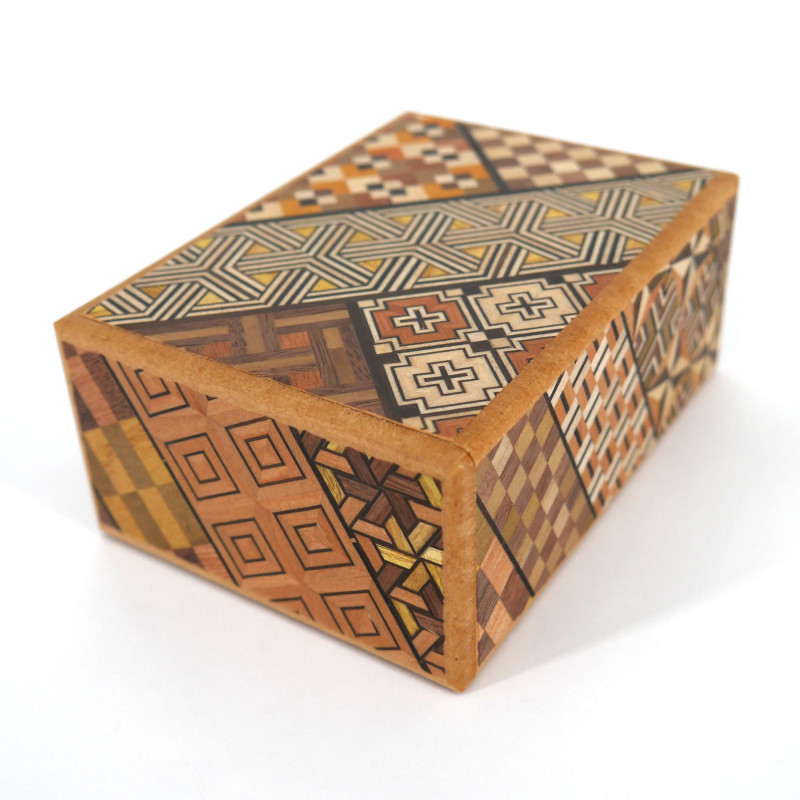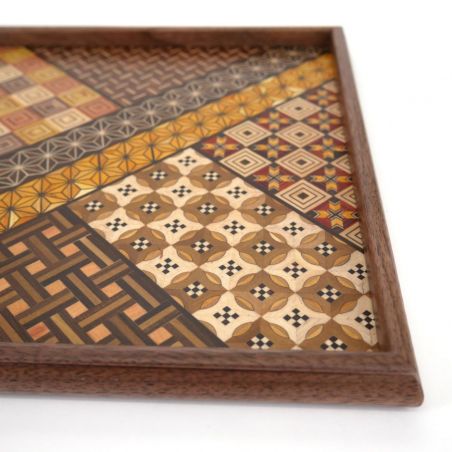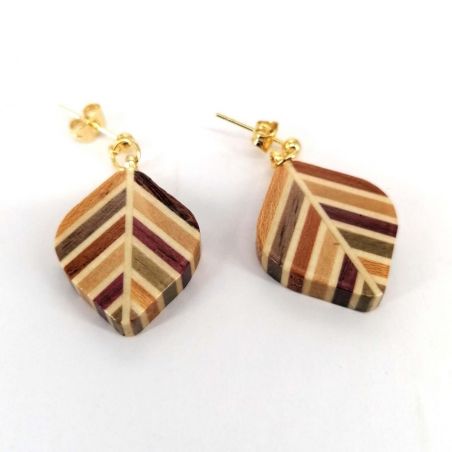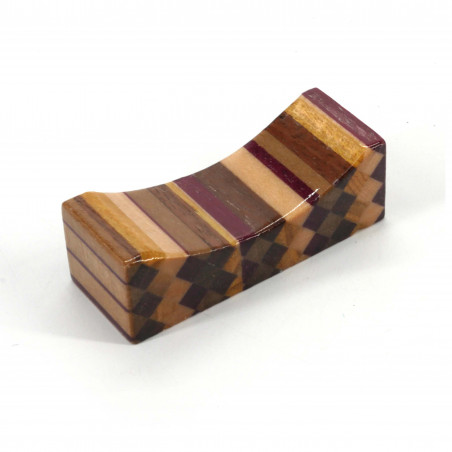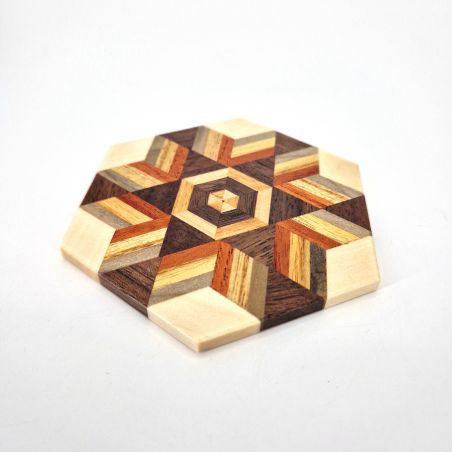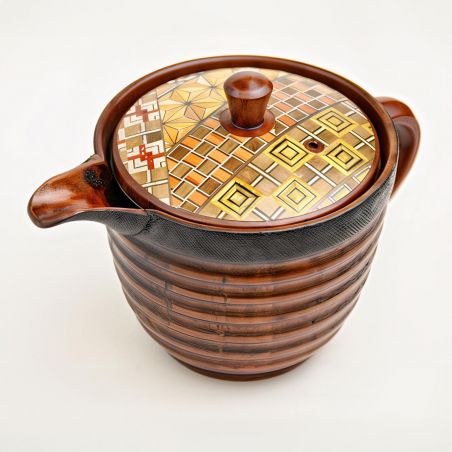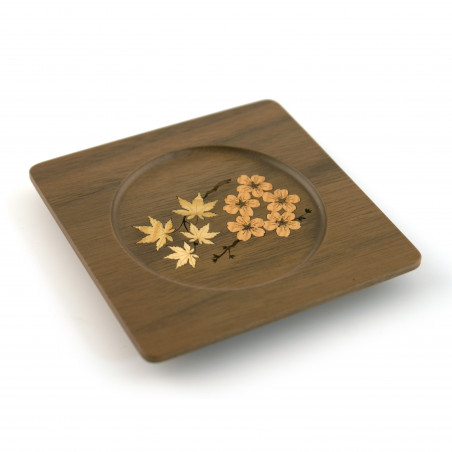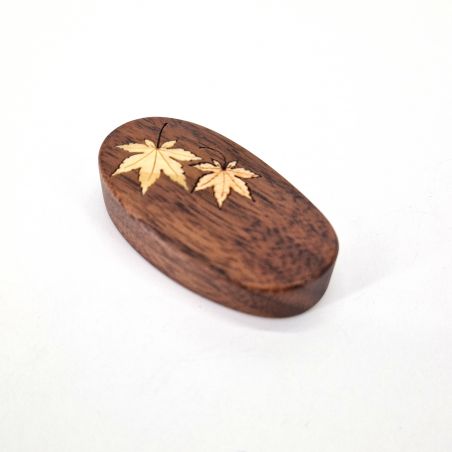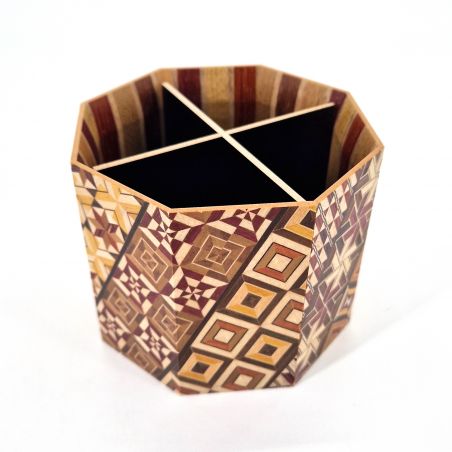Hakone Yosegi Traditional Marquetry Secret Box, 4 steps

Hakone Yosegi Traditional Marquetry Secret Box, 4 steps
Brand:
PRODUCT SPECIFICATIONS
| height | 5.1 cm |
|---|---|
| width | 8.5 cm |
| length | 11.8 cm |
| Packing | Packaged in a cardboard box |
| Product origin | Made in Japan |
| Compositions | wood |
Learn more
Secret box in traditional Yosegi marquetry from Hakone, 4 levels
Yosegi art
How are patterns created? Its history How to take care of Yosegi products? How are patterns created?Yosegi is a type of Japanese geometric woodworking that originated in the Hakone Mountains in the Edo period.
The patterns are created using different colours of wood for each section. Common colours used in Yosegi patterns are white (spindle trees or llex macropoda), black (aged Katsura), yellow (Picrasma quassioides, mulberry or sumac), brown (camphor and Amur maackia), purple (American black walnut), blue (Japanese cucumber) and red (Chinese cedar).
The wood is cut into oblong stems before being glued to create the pattern, after which thin slices of the pattern are cut and glued onto the boxes. The boxes are then coated with a lacquer to give them a shiny appearance and protect them.
Yosegi-zaiku (寄木細工), or simply yosegi (寄木), is a type of traditional Japanese marquetry that emerged in the late Edo period (1603 - 1867). Yosegi inlay is commonly used on the outer sides of Japanese secret boxes (himitsu-bako), but also decorates many other crafts, such as trays, chests, picture frames and jewellery boxes. Hakone-yosegi-zaiku marquetry, typical of the Hakone region, was created in the late Edo period by a local craftsman, Nihei Ishikawa (1790-1850). The village of Hakone, located about 100 km east of Tokyo in Kanagawa Prefecture, is particularly famous for its himitsu-bako and marquetry.
The use of Hakone-yosegi-zaiku marquetry to decorate himitsu-bako boxes is late, dating from the Meiji era (1868-1912). The first secret opening boxes, called sikake-bako or tie-bako, are relatively simple and not very decorated. During the 19th century, the combinations of movements of the moving parts became more complex. Around 1870, the master craftsmen Takajiro Ohkawa, Tatsunosuke Okiyama and Kikukawa integrated yosegi-zaiku decoration into the manufacture of these boxes, thus creating the first himitsu-bako of Hakone.
To care for yosegi products, simply polish them with a soft, dry cloth and refrain from exposing them to excessive sunlight, moisture or heat.
SHIPPING AND RETURNS
Delivery times:
- 1 to 3 business days for France, Belgium, and Switzerland.
- 3 to 5 business days for other European countries.
- 3 to 5 business days for other countries via DHL.
This item is shipped from our warehouse in France.
You can return or exchange an item within 14 days of receiving your order. For more information, please consult our Return Policy.
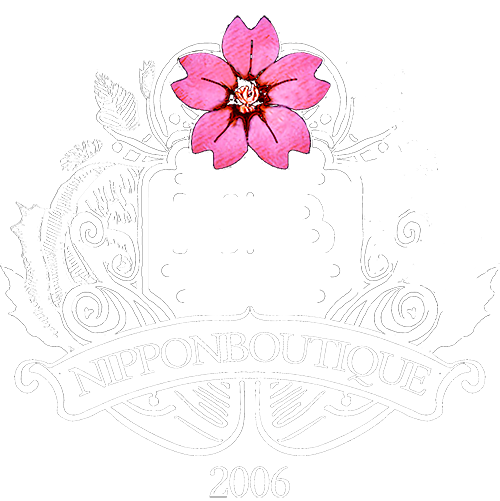
.jpg)


















































































